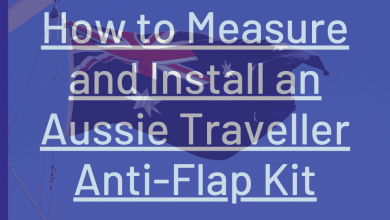Australia is one of the most desirable destinations for family migration due to its high quality of life, excellent healthcare, and strong economy. If you are looking to reunite with your family in Australia, understanding the family migration visa process and sponsorship requirements is essential.
This guide will walk you through the various family visa categories, eligibility criteria, application processes, and recent changes in 2025 that impact visa sponsorship. Whether you are an Australian citizen, permanent resident, or eligible New Zealand citizen wanting to sponsor a family member, this article will provide you with all the necessary details.
Why Choose Australia for Family Migration?
Australia offers a stable and prosperous environment for families. Key benefits include:
- A robust healthcare system (Medicare)
- High-quality education and job opportunities
- Multicultural communities with a strong support system
- Family-friendly policies and government support programs
With the right visa, you can bring your spouse, children, parents, or other eligible relatives to join you in Australia.
Types of Family Migration Visas in Australia (2025)
The family visa categories include:
1. Partner Visas
For spouses and de facto partners of Australian citizens, permanent residents, or eligible New Zealand citizens.
- Subclass 820/801 (Onshore Partner Visa): Temporary and permanent residency pathway.
- Subclass 309/100 (Offshore Partner Visa): For applicants applying outside Australia.
- Prospective Marriage Visa (Subclass 300): For engaged partners planning to marry an Australian citizen or PR.
2. Parent Visas
For parents of Australian citizens or permanent residents.
- Contributory Parent Visa (Subclass 143 & 173): Faster processing but requires a higher application fee.
- Parent Visa (Subclass 103): Low-cost but has longer waiting periods.
- Aged Parent Visa (Subclass 804): Only for parents meeting the Australian pension age criteria.
3. Child Visas
For dependent children of Australian citizens, PRs, or eligible New Zealand citizens.
- Child Visa (Subclass 101/802): Permanent residency for biological or adopted children.
- Orphan Relative Visa (Subclass 117/837): For children whose parents are deceased, unable to care for them, or missing.
- Dependent Child Visa (Subclass 445): Temporary visa for children of temporary partner visa holders.
4. Other Family Visas
For relatives who depend on Australian citizens or permanent residents.
- Remaining Relative Visa (Subclass 115/835): For applicants with no close relatives outside Australia.
- Aged Dependent Relative Visa (Subclass 114/838): For elderly relatives financially dependent on an Australian citizen or PR.
- Carer Visa (Subclass 116/836): For individuals providing ongoing care to an Australian citizen or PR with a medical condition.
Sponsorship Requirements for Family Visas
To sponsor a family member, you must:
- Be an Australian citizen, permanent resident, or eligible New Zealand citizen.
- Be at least 18 years old.
- Meet the financial requirements to support your relative.
- Provide evidence of relationship and genuine commitment.
- Pass character and background checks.
- Not have any significant sponsorship restrictions (e.g., previous visa breaches).
Key Changes in Australian Family Migration (2025)
- Faster Partner Visa Processing: The Australian government has improved processing times for partner visas to support family reunification.
- Increased Sponsorship Obligations: Sponsors must meet stricter financial and character requirements.
- Higher Visa Fees: Some visa fees have increased due to higher demand.
- New Pathways for Parents: Additional parent visa allocations to accommodate growing demand.
How to Apply for an Australian Family Visa (Step-by-Step Guide)
- Check Eligibility: Confirm your visa type and ensure you meet all requirements.
- Gather Documents: Passport, proof of relationship, financial evidence, and health checks.
- Lodge Visa Application: Apply online via ImmiAccount on the Department of Home Affairs website.
- Pay Fees: Pay the visa application fee based on the subclass.
- Biometrics & Health Check: Complete medical examinations and provide biometrics.
- Wait for Processing: Processing times vary; check the Home Affairs website for current estimates.
- Receive Visa Outcome: If approved, you will receive a visa grant notification.
Common Reasons for Family Visa Rejections
- Insufficient evidence of relationship (for partner visas).
- Failure to meet financial requirements.
- Health issues that impact visa eligibility.
- Character concerns or previous visa violations.
- Providing false or misleading information.
Tips for a Successful Family Visa Application
- Submit a complete and accurate application with all necessary documents.
- Provide strong relationship evidence (e.g., photos, communication logs, joint financial statements).
- Stay updated on policy changes that may affect processing times.
- Seek help from a registered migration agent if needed.
Conclusion
Bringing your family to Australia through visa sponsorship can be a life-changing experience. Understanding the visa process, eligibility requirements, and recent policy updates is crucial for a successful application. By following the guidelines above, you can ensure a smooth migration journey for you and your loved ones.




